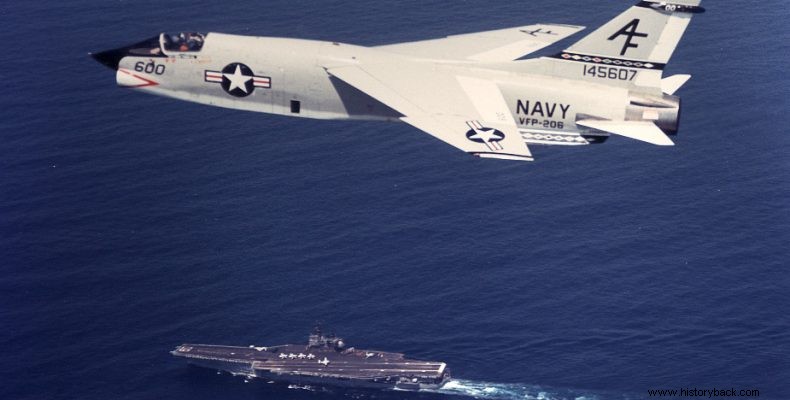
The Vought F-8 fighter, the "first cousin" of the attack A-7 Corsair, was one of the best fighters of the US Naval Air Force, in the period 1957-1976. Aircraft of the type also participated in the Vietnam War, operating from American aircraft carriers, which were usually anchored in the Gulf of Tonkin.
The aircraft was armed with four 20mm cannons, two each mounted on the forward parts of the fuselage, while they could also carry AIM-9 Sidewinder air-to-air missiles. . The aircraft could develop a maximum speed of about 1,800 kilometers per hour. at a great height.
On December 14, 1967 an F-8, of VF-11/111 Squadron of the aircraft carrier USS "Oriskany" , piloted by Lt. Capt. Richard Schaffert, was ordered to escort an A-4 Skyhawk light attack aircraft , which would hit a North Vietnamese anti-aircraft missile array.
As the two American aircraft flew towards the target, two North Vietnamese Mig-17 fighters appeared. The aircraft in question were obsolete, but they were excellent in close combat . Schaffert, when he saw the enemy aircraft, "dived" to escape, as he had been taken by surprise.
From 6,000m. descended to 1,000m. He then looked for the A-4, but instead saw two more Migs coming at him. Schaffert, however, was not a random pilot. He already had a total flying experience of 3,500 hours. So he decided to engage the four opposing aircraft, despite knowing the superiority of the opposing aircraft in maneuverability. The four Migs split into two pairs and attempted to attack.
Schaffert, with constant maneuvering, using the afterburner, managed to get behind the pair of Migs and target one Mig, firing a rocket at it, but it did not explode . The same thing happened, shortly after, against a second Mig.
It was the MiGs' turn to respond, launching two K-13 missiles at him, but they missed . Schaffert managed to regain the advantage shortly, but the third missile he attempted also missed due to a malfunction in the guidance system. So the American pilot was left with a missile and his guns, fighting for his life , against four enemy fighters.
With a 5g turn, Schaffert, I was again on the tail of a Mig, but when he pressed the button on his guns, they did not respond, as the high g maneuvers caused damage to the pneumatic gun filling system , causing them to get stuck. At the time when Schaffert was unarmed, essentially, against four opponents, another two aircraft appeared and this time they were modern Mig-21 , equipped with missiles.
The Mig-21s fired a missile each at the desperately maneuvering F-8, but missed a target. Facing six, now, opponents, and without weapons, Schaffert decided to stop the battle and return to his aircraft carrier. After all, he had little fuel left.
Although due to a failure of his weapons he did not manage to shoot down any enemy aircraft, this dogfight is taught to this day in American and not only aviation schools, an dogfight with a ratio of 6:1.
